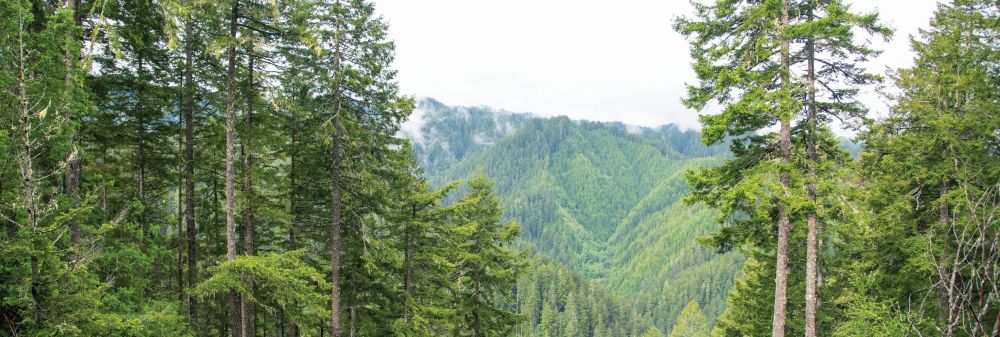Balancing timber production to maximize biodiversity

As the human population grows, the demand for resources is increasing. But at what cost to biodiversity? Just as the agricultural industry contends with how to sustainably feed eight billion humans, the challenge for forest managers is to find sustainable ways to meet human wood consumption needs, explains Matt Betts, Ruth H. Spaniol chair of renewable resources and professor in the department of forest ecosystems and society.
“What we consume has a huge impact on our planet’s biodiversity,” said Betts. “But very few researchers have tested approaches to minimize tradeoffs between timber production and biodiversity conservation.”
Betts explains that in agriculture, there are two main camps of thinking. The first, “land sparing” involves setting aside large portions of the landscape as unmanaged reserves, and growing crops intensively in others. The second, “land sharing” involves low-intensity “nature-friendly” agriculture. This results in lower yield, increased total area for food production and therefore few or no reserves.
In forestry, this “land sharing versus sparing” model has been expanded to a triad approach, where a given landscape may be divided into differing proportions of three distinct management groups — reserves, focused on biodiversity conservation; intensive management, focused on wood production; and ecological forestry, which is a mix of both.
To test this approach, he is collaborating with stakeholders inside and outside the College of Forestry to launch a 20-year study across 40 different sub-watersheds in the Elliott State Research Forest. The research is designed to test different proportions of all three management types across various forest landscapes (watersheds). By doing this, Betts and his team hope to learn how these management approaches affect biodiversity and wood production over time.
Before the project can begin, it must gain the approval of many stakeholder groups to be completed on the state-owned forest. In the meantime, Betts is working on a shorter-term version of this project funded by the National Institute for Food and Agriculture.
In collaboration with several CoF researchers, including Klaus Puettmann, Doug Mainwaring and John Sessions along with Taal Levi, a professor in the Department of Fisheries, Wildlife and Conservation Sciences, and doctoral student Maggie Hallerud, Betts’ team is collecting data from forests that fall under the categories of reserve, intensive management and ecological forestry. They are performing preliminary modeling about how each approach affects biodiversity. Hallerud is leading the biodiversity data collection and analysis and Levi is leading the eDNA analysis in this work.
Before and after each experiment, the team counts various species, measures vegetation and incorporates cutting-edge research methods. Researchers are identifying recorded bird sounds through machine learning, tracking wildlife with game cameras powered by artificial intelligence and using DNA barcoding (eDNA) to monitor species diversity.
This study comes with limitations, however, and Betts thinks the most meaningful insights will come from a longer-term project with more controlled experiments at landscape scales.
“That’s the real gold standard for science,” he says. “What we find in short-term studies is often overturned by what we find in long-term studies. And with how long-lived trees are, there’s certain information we could never get during a single career.”
Betts believes a long-term research project in the Elliott State Research Forest could offer critical insights into how to conserve biodiversity and sequester carbon while sustainably keeping up with society’s increasing demand for wood products.
“We don’t have enough information about this mix of forestry practices in the Pacific Northwest,” he said. “A long-term project like the one proposed for the Elliott would enable us to try to reduce the potential trade-offs between timber production and conservation — and identify an ideal mix of forestry management practices that enable production of wood while still maintaining biodiversity. If successful, this could be a fantastic example of approaches to balance human needs with biodiversity conservation, and how people can collaborate to move beyond historical conflicts about forest values.”

A version of this story appeared in the Spring 2023 issue of Focus on Forestry, the alumni magazine of the Oregon State University College of Forestry.

